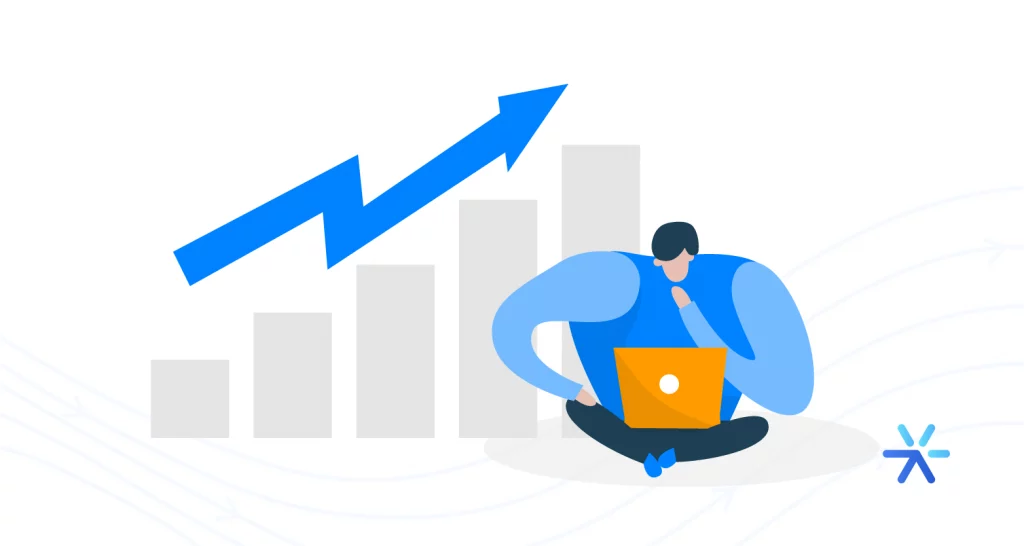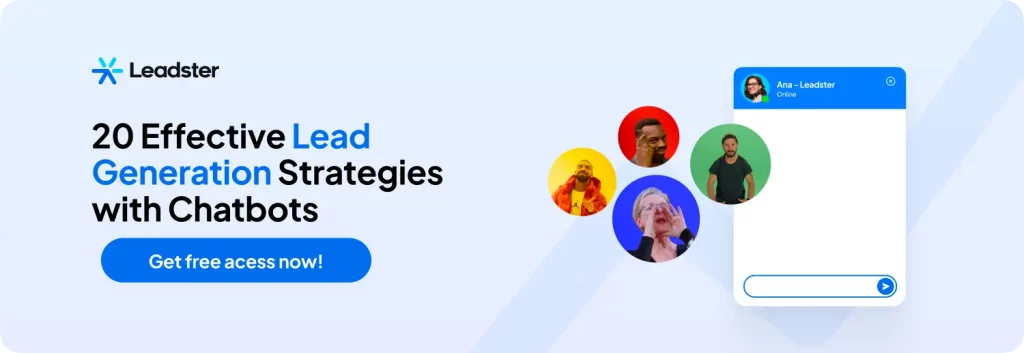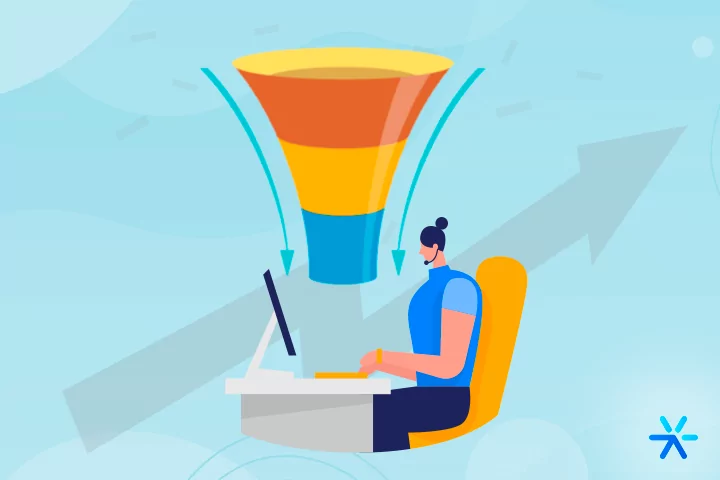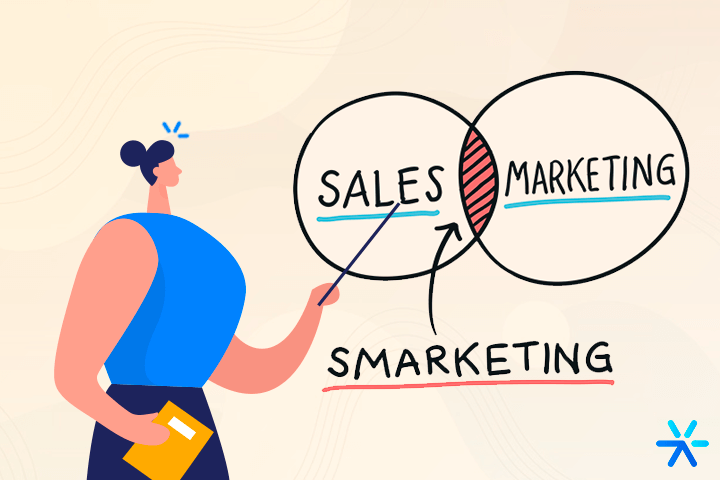Sales Conversion: How to Increase Your Company’s Most Important Metric
The goal of any company is sales conversion .
Marketing and sales team efforts have the same purpose behind: motivating a potential customer to advance steps in the sales funnel and finally make the decision to make a purchase.
However, the sale goes far beyond just the moment of the transaction.
Selling is a non-linear process that incorporates different stages.
It includes mapping opportunities, building strategies to attract prospects, build relationships with them, build trust and engage with the audience, in addition to post-sales work and customer satisfaction.
In this way, conversion does not just concern the actual sale, but rather the movement to the next phase of the process.
To get a deeper understanding of conversions, we suggest looking at various types of conversions throughout your sales funnel .
These metrics will reveal the performance of your sales team and help you evaluate the efficiency of your actions.
It is interesting to observe and identify possible gaps to be addressed and enhanced so that the results of efforts are more assertive.
Understand which conversions affect your performance the most at each stage of the funnel so that strategies to improve your metrics are truly efficient.
Conversion rate analysis is also used to evaluate your sales team’s goals, check the efficiency of a specific campaign or even understand who the salesperson stands out the most.
It can be measured monthly, quarterly or even annually – acting as a guide to define a company’s annual planning, for example.
What are conversion rates?
The conversion rate represents the percentage of potential customers who moved from one stage to the next within the sales funnel.
In other words, conversion rates show how many prospects progress from one stage to the next on the journey until they become consumers.
This measure can be applied to B2B lead generation, account expansion and even upselling and will unravel a buyer’s journey to become a prospect, and then advance to qualified lead, from lead to opportunity, from opportunity to negotiation and negotiation for sale.
Simplifying the concept, the conversion rate is the number of conversions divided by the number of total prospects .
Remembering that conversion can be understood as any action you want your potential customer to take.
For example: downloading an e-book, subscribing to a newsletter, clicking a CTA button, even adding an item to the shopping cart or closing a deal.
If you think about the sales process from start to finish, there are conversion points at each stage.
For example, if someone visits your website, how effective is your communication so you can convert that visit into a test or a conversation?
From there, ask yourself: are you able to convert this conversation (whether by email, message or phone) into a sales meeting or demonstration of your product/service?
Knowing how to identify the conversion rates that apply to your business and carefully monitoring them is the key point to knowing how to improve your strategies and seeing what is working in your company and what needs to be improved.
How important is it to monitor sales conversion rates?

How do you know if your customer acquisition strategy is working?
How do you find out if salespeople are managing to generate value at the time of the sales pitch?
How do you monitor whether negotiations are really profitable?
Through these questions you can understand the importance of being on top of your business’s conversion rates.
Conversion rates have the power to highlight results within your company and are a simple and effective way to analyze your sales performance.
Understanding exactly how your potential customers’ purchasing journey is progressing can provide an accurate diagnosis of which steps are working well and which steps are failing in some way.
Having this information on the table, you can act more assertively to refine the process at a specific point.
Monitoring conversion rates can also contribute to medium and long-term planning, so that goals are as faithful to reality as possible.
Having real data on conversion rates at hand , you will be able to calculate your organization’s growth potential and take the next steps to grow in the safest and most sustainable way.
Finally, the main reason to pay attention to this metric is to increase the efficiency of your sales strategies and, consequently, increase revenue.
After all, the money you save by eliminating inefficient processes can be converted into other strategies that work very well.
How to calculate conversion rates
As we said in this article, conversion rates relate to the stages of the sales process.
To calculate your company’s rates, we suggest evaluating the following points:
Identification of potential buyers
The initial stage of the sales funnel is the recognition of potential buyers who have the potential to benefit from the solution your company offers.
Therefore, at this stage, buyers are not yet looking for a solution to solve a certain problem, but, through research, it was possible to identify a latent need that could be solved with your product or service.
We suggest first grouping prospects into segmented contact lists (by pain point or segment of activity, for example) and then starting approaches.
The way potential customers react to your approach will determine whether they go from being prospects to leads.
To calculate this conversion rate, you can use the following formula:
Number of leads in the month / Number of prospects processed in the month
= Conversion from prospect to lead
Qualified leads
You can consider leads to be those who reacted positively to your first active prospecting approach.
If you managed to set up a meeting after a cold call or cold email , you already have a lead who is interested in the solution you offer.
This initial conversation aims to present your product/service and better understand the context of the potential customer, their pain points, their needs and desires.
If the lead is really interested in seeing a demonstration of your solution, it can be considered a qualified lead, that is, a sales opportunity.
Using this formula, you can identify the quality and degree of suitability of leads.
The result of this calculation will reveal the conversion of leads into real opportunities:
New opportunities of the month / Number of leads processed in the same period
= Converting leads into opportunities
Commercial proposal delivered
Suppose that at this stage you have already demonstrated your product or service to this potential client and they have already understood in detail how your solution will help them solve their pains and needs.
This is also when you need to overcome objections in order to continue negotiations.
To measure your success at this stage from sales opportunity to negotiation, you can use the following formula:
New trading opportunities / Number of opportunities processed in the demo stage
= Conversion from demo to trading
Proposal under negotiation
Once the commercial proposal has been delivered, the conditions for negotiation are discussed at this stage.
It is at this time that you will agree on the details related to the contract: the conditions of delivery or provision of the service, the values, payment methods, special conditions and concessions.
To know the result of negotiations, calculate the negotiation to close conversion rate using this formula:
New opportunities closing / Number of opportunities processed in the negotiation stage in the period
= Conversion from trade to close
Closure
We have reached the last stage of the sales funnel: closing the purchase, that is, signing the contract or confirming payment.
When you send the commercial proposal and your potential client accepts it, he stops being a potential client and officially becomes a client of your company.
You can measure this conversion rate using the following calculation:
New customers / Number of opportunities processed in the closing stage in the period
= Closing conversion for customers
Here we show how to calculate the conversion rate for each stage of the sales funnel.
But to calculate the overall conversion of the entire process, you can follow this formula:
New customers / Number of leads processed in the period
= Overall funnel conversion

And how to improve sales conversion rates?
We already know that conversion rates correspond to each stage of the sales funnel .
Here are some tips for you to improve the results of your conversion rates at each stage of this process:
Lead generation
Searching for leads is essential to increasing your company’s revenue.
The only case in which this does not apply is if your sales team cannot handle the number of leads generated.
It is more important to focus on the quality of service than to promote new opportunities but not be able to be effective with communication.
Evaluating the conversion rate at this stage will indicate how well you are capturing leads.
If the conversion rate is low at the beginning of the sales funnel, it is possible that the identification of potential customers is not being effective or that the opportunities are not sufficiently qualified.
In other words, it is possible that you are wasting time talking to people who are not willing to buy at that moment or you are not being able to reach decision makers .
To solve this problem, we suggest having well-defined personas so that the search for prospects is more refined and assertive.
Knowing exactly the profile of your ideal client will help you generate more qualified leads that have real potential to close deals.
Request referral/partnership program
Seeking partnerships with other companies can help increase your conversion rates.
A partnership, to be worthwhile, needs to be creating a win-win relationship , where both parties benefit.
Creating cooperation programs with partner companies can help generate credibility in the public eye, in addition to giving access to a larger customer base.
Working with a company that is already established in the market and showing the public that your business has already supplied products or services to such a company can help build a solid reputation and gain trust in the market.
Additionally, you can ask for referrals from partners.
Knowing how to relate to other companies can bring countless advantages, and creating a mutual support network will only strengthen your company’s position in the market.
You can also think about the possibility of creating partnership programs that work through rewards.
If you offer commissions to partners, they will want to help and you can offer a financial reward.
Understanding the buyer’s moment
One of the reasons your conversion rate is low could be because your buyer is not at the right time to make a purchase.
In other words, he may not have yet reached the stage of the purchasing journey where he decides that he needs to solve a problem and starts searching and evaluating the options on the market.
Presenting a commercial proposal to a prospect who has not yet been qualified has a high chance of not converting.
This is why the work of the pre-sales team is so important : analyzing, evaluating and qualifying whether or not that prospect can be approached at this time by the sales team.
We know that not all leads will become customers and that is why it is necessary to take this into consideration before making the first approach.
It is worth mentioning that even if you manage to sell to a customer, if they are at an inopportune moment they may not have efficient results and this will end up impacting their satisfaction.
He will probably have a negative experience and he will certainly not recommend your product or service to other people, in addition to thinking twice before closing other agreements with your company again.
If it is the case that the lead is not in a favorable moment financially, it is better to be patient and understanding to understand the moment they are in rather than forcing a sale and then having this negatively impact your business.
The ideal is to monitor each lead individually, respecting each person’s time in the purchasing process.
Therefore, it is essential to organize and categorize your leads and always follow up sales with them.
This way, when you present the proposal at the right time, you will be successful in closing the sale and making your customer happy.
Qualify the lead and identify the main pain
We have already talked about the importance of qualifying the lead.
But to carry out this screening process, you need to study and know your audience well.
And to know your audience well, you need to conduct research.
Whether researching passively, monitoring data on the Internet through analysis tools, or actively, conducting quantitative and qualitative research, speaking directly to the public.
Discovering your customer’s pain is not only useful for sales strategies, and for marketing and communication actions, but it can also impact your company as a whole.
This means that this information about your target audience is extremely valuable and has the power to radically change your business.
To improve your conversion rates, you need to have access to this information and know how to use it to your advantage during the sales process.
Take care of your proposal
If the lead has gone all the way through the purchasing journey until they reach the stage where they are willing to negotiate, it is the perfect time for you to present an irresistible proposal and finally close the deal.
When the conversion rate is lagging at this stage, it is because there must be gaps to be seen and points to be reviewed.
It is possible that the failure is at an earlier stage than this, if the lead is not qualified, but it is also possible that the proposal you presented is not suitable for that potential client.
At this stage, it is important to listen and analyze the objections to work on dissolving them assertively.
Another point is to listen more than talk during negotiation.
Sometimes just praising the product or service may not be the best way.
It’s interesting to be open to listening to your potential client and understanding them in depth, so that your proposal can perfectly fit their needs.
Be consultative
Another tip to increase your conversion rates is to take a consultative approach.
Really seek to support your potential client, offering the best solution to help them resolve any issue.
When you can be an empathetic salesperson to put yourself in your potential client’s shoes, you will be able to better understand their pain points and, consequently, help them overcome obstacles that impede the growth of their company.
Negotiation
A low conversion rate in the final stages of the sales funnel may be related to sales objections.
Being prepared to work around them can be decisive in increasing your conversion rate at this stage.
An effective way to confront objections is to create an objection matrix, that is, to map out the possible barriers that may arise during negotiation.
You need to keep the objections in mind and have plausible arguments on the tip of your tongue to overcome them.
If the objection is connected to a financial issue, it is essential that you present solutions and alternatives that can benefit your potential client.
This doesn’t mean you necessarily need to give discounts or reduce your profit margin.
You can evaluate payment methods and explore other options, such as extending deadlines or offering installments.
Another point to observe is to assess whether that sale is good for both sides.
Selling for the sake of selling is not enough to increase your company’s revenue.
You also need to build a reliable and lasting relationship with your client, so that you can reap the rewards of this partnership in the long term.
Try to sell intelligently and the result will always be positive.
Closure
Imagine that you managed to guide your potential customer through all the phases of the sales funnel and when the time came to actually close the purchase, they gave up.
If the conversion rate is low at this final stage, there may be a flaw in the process that needs to be investigated and fixed.
It is essential to pay attention to details .
Send a formal proposal with all agreed points presented clearly and visibly, including the description of your product or service, payment methods and execution and payment deadlines and any other detail that you deem important.
One tip is to automate this process using digital tools that facilitate access for those involved to the information provided.
This can help monitor who accesses it, when and where, as well as keeping a history of the customer.
Add value during the sales process
Throughout the negotiation, we suggest offering something that generates value for your potential client.
It could be training about your product or service, or consultancy, or something that you consider important for the scenario it finds itself in today.
Make yourself available to provide support and be flexible so that your after-sales service is attractive to that customer.
You can create a sales process that, in itself, generates value.
This way you will gain your prospect’s trust, directly impacting your conversion rate.
Shorten the sales cycle
The purchasing journey may vary from customer to customer.
It is important to pay attention to the specificities of each one.
In some cases, the sales cycle can be more efficient if it is shortened.
Depending on the company, there may be many people involved in the process, while in others, one person is the only one making the decision.
That’s why it’s essential to do solid research on each prospect: each approach must be unique and adjust to the needs of each potential client.
Mini closures
In some specific cases, you can apply mini closings to your sales process.
Instead of negotiating a big sale, try offering a pilot first.
You can submit a proposal with a purchase that represents a portion of the total proposal.
And if the customer is satisfied with the experience, they can opt for the complete package.
Optimizing processes through technology

We can use technology to our advantage to make the sales process more fluid and productive.
We have separated some fundamental points in which technology can boost your sales conversion rates:
Standardizes business operations
There are countless software that standardize business operations through artificial intelligence.
These tools can contribute to the productivity of your sales team and end up directly impacting your conversion rates.
The use of this technology helps to create automation of emails, calls and follow-ups that favor the standardization of the process.
In addition to being useful for qualifying leads, automating cadences and building basic itineraries.
Facilitating these processes helps create a relationship of trust from the first moment.
Makes qualification assertive
We have already seen how much pre-sales can influence your sales results.
Qualifying leads in detail can directly increase your conversion rates.
There are many intelligent tools that assist in this screening process, filtering statistics and building graphs with concrete data that facilitate lead analysis.
Through this lead qualification software it is possible to sift only real business opportunities.
Promotes the construction of itineraries
The analysis of this data from the previous stage favors the construction of precise itineraries and for the first approach.
The more assertive the first approach, the better results you will have.
Through real data provided by intelligent tools, you will have a solid basis to create infallible arguments to sell your product or service, in addition to providing ideas for you to define mental triggers that really work for each potential customer’s pain points.
Commercial work can be considered an exact science and sales conversion rates are there to demonstrate this assertively.
These powerful indicators will reveal how efficient your sales efforts are being and can be a great ally when it comes to adjusting the sails of your boat to go even further.
It is important to note that only you can assess whether your conversion rates are satisfactory or not.
This is because conversion rates do not have a fixed result, but each segment can present different values .
To understand your business’s conversion rates, you need to study your company’s area of activity and compare your results with those of the competition.
Put into practice all the tips we brought in this article and do what needs to be done to adjust your sales process and optimize your efforts in the commercial and marketing area.
And if you have any questions, remember that we are here to help!








